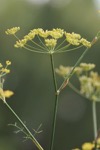Notice (8): Undefined index: geoplugin_countryCode [APP/Controller/AppController.php, line 94]Code Context$Country_code = '';if($ip_data && $ip_data['geoplugin_countryCode'] != null) {$Country_code = $ip_data['geoplugin_countryCode'];$client = null $forward = null $remote = '216.73.216.156' $ip = '216.73.216.156' $ch = unknown $ip_data_in = '{ "geoplugin_status":429, "geoplugin_message": "Blacklisted due to sending too many requests to geoplugin.net. Consider whitelisting your IP or domain", "geoplugin_url": "https://www.geoplugin.com/premium/" } ' $ip_data = [ 'geoplugin_status' => '429', 'geoplugin_message' => 'Blacklisted due to sending too many requests to geoplugin.net. Consider whitelisting your IP or domain', 'geoplugin_url' => 'https://www.geoplugin.com/premium/' ] $Country_code = ''App\Controller\AppController::initialize() - APP/Controller/AppController.php, line 94 App\Controller\ProductsController::initialize() - APP/Controller/ProductsController.php, line 31 Cake\Controller\Controller::__construct() - CORE/src/Controller/Controller.php, line 273 ReflectionClass::newInstance() - [internal], line ?? Cake\Http\ControllerFactory::create() - CORE/src/Http/ControllerFactory.php, line 47 Cake\Http\ActionDispatcher::dispatch() - CORE/src/Http/ActionDispatcher.php, line 91 Cake\Http\BaseApplication::__invoke() - CORE/src/Http/BaseApplication.php, line 235 Cake\Http\Runner::__invoke() - CORE/src/Http/Runner.php, line 65 Cake\Http\Runner::__invoke() - CORE/src/Http/Runner.php, line 65 Cake\Http\Middleware\CsrfProtectionMiddleware::__invoke() - CORE/src/Http/Middleware/CsrfProtectionMiddleware.php, line 108 Cake\Http\Runner::__invoke() - CORE/src/Http/Runner.php, line 65 Cake\Http\Runner::run() - CORE/src/Http/Runner.php, line 51 Cake\Routing\Middleware\RoutingMiddleware::__invoke() - CORE/src/Routing/Middleware/RoutingMiddleware.php, line 168 Cake\Http\Runner::__invoke() - CORE/src/Http/Runner.php, line 65 Cake\Routing\Middleware\AssetMiddleware::__invoke() - CORE/src/Routing/Middleware/AssetMiddleware.php, line 88 Cake\Http\Runner::__invoke() - CORE/src/Http/Runner.php, line 65 Cake\Error\Middleware\ErrorHandlerMiddleware::__invoke() - CORE/src/Error/Middleware/ErrorHandlerMiddleware.php, line 96
| Scientific: | Foeniculum vulgare |
|---|---|
| Other: | Fennel |
| Family: | Apiaceae |
Fennel originates from the Mediterranean region where the Ancient Greeks first discovered it. Over the centuries its popularity grew, and its cultivation spread around the world. The essential oils taste like “black licorice” because it contains anethole.
- People eat the root as a vegetable and use the seeds as a culinary spice.
In medicine, this carminative herb treats “flatulent dyspepsia” to help promote digestion and relieve cramping associated with bloating and gas. Herbalists frequently combine stimulating laxatives with fennel seeds to reduce the griping pain produced by these laxatives. Research also suggests fennel can improve some symptoms of irritable bowel syndrome (IBS).
Female complaints also benefit from fennel because it balances female hormones. Anethole appears to modulate dopaminergic receptors that control prolactin release, and this explains why fennel has long been used as a galactagogue to promote lactation. Research suggest fennel can help encourage the menstrual cycle in those suffering from amenorrhea and oligomenorrhea.
- Fennel also helps improve some menopausal symptoms including low libido and vaginal dryness.
Anise (Pimpinella anisum) belongs to the same plant family (Apiaceae) as fennel. Both plants contain essentially the same phytochemicals and thus share the same medical properties. You can use them interchangeably in practice.
Gastrointestinal
• digestive complaints with bloating and gas causing cramps:
• flatulence
• colic
• irritable bowel syndrome (IBS)
Note: found in many " gripe water " formulas for children's colic.
Respiratory
• infections
• conditions with phlegm
• bronchitis
• asthma
Gynecological
• agalactia (traditional use)
• menstrual pains
• dysmenorrhea
• hirsutism
• Carminative
• Antispasmodic
• Expectorant
• Hormone regulator
• Galactogogue
• Phytoestrogen
• Emmenagogue
• Antimicrobial
• Volatile Oil
• Monoterpens (Anethole)
• Flavonoids
• Coumarins
• Tincture (1:5 in 40% EtOH): 1-5 ml tid
• Infusion (dried herb): 1-2 tsp tid
Generally considered safe when used as indicated.
Caution: GERD; carminatives relax lower esophageal sphincter tone and may aggravate heartburn.
Barnes J, Anderson LA, Phillipson JD. Herbal Medicines, 3rd ed. London: Pharmaceutical Press, 2007.
Bone K. Principles and Practice of Phytotherapy. Edinburgh: Churchill Livingstone, 2000.
Bone K. A Clinical Guide to Blending Liquid Herbs: Herbal Formulations for the Individual Patient. St Louis, MO: Churchill Livingstone, 2003.
Brinker F. The Toxicology of Botanical Medicines, 3rd ed. Sandy, Oregon: Eclectic Medical Publications, 2000.
Felter HW, Lloyd JU. King's American Dispensatory. 1898. http://www.ibiblio.org/herbmed/eclectic/kings/main.html. Accessed: August 19, 2006.
Hoffman D. Medical Herbalism. Rochester, Vermont: Healing Arts Press, 2003.
Weiss RF. Herbal Medicine. Beaconsfield, England: Beaconsfield Publishers Ltd, 1988.
Williamson EM, ed. Major Herbs of Ayurveda. Edinburgh: Churchill Livingstone, 2002
Disclaimer: This content is subject to change. The information is intended to inform and educate; it does not replace the medical evaluation, advice, diagnosis or treatment by a healthcare professional. www.nhpassist.com © 2014 NDAssist Inc. and/or its affiliates. All rights reserved.

|
Fennel
SummaryFennel originates from the Mediterranean region where the Ancient Greeks first discovered it. Over the centuries its popularity grew, and its cultivation spread around the world. The essential oils taste like “black licorice” because it contains anethole. IndicationsSign in requiredActionsSign in requiredConstituentsSign in requiredPosologySign in requiredSafetySign in requiredReferencesSign in required |
|---|